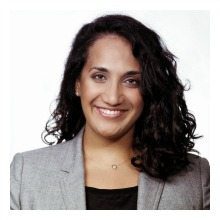
On September 30, 2013, Savan Group announced that it was awarded a contract to develop a publication on women’s employment rights for the Department of Labor’s Women’s Bureau. Since then, the Policy & Research division of the Arlington, Va.-based management consulting firm has been busy delving into important issues facing government agencies and the women who work there.
Azadeh Meshkaty, Senior Consultant at Savan Group, is one of the team members working closely with the Women’s Bureau to evaluate the impact and position of women in the workplace. “One thing that sets our company apart is our effort to look at our client as a partner who has skin in the game,” she said. “We partner with agencies and their subject matter experts to tap into their knowledge and leverage what they know during our research process.”
Meshkaty recently spoke with WashingtonExec about Savan Group’s work with the Women’s Bureau including some of the company’s research findings on women in the workplace. Our conversation is below:
WashingtonExec: How does Savan Group assist government clients with their policy and research needs?
Azadeh Meshkaty: Most of our work in the policy and research realm involves supporting agencies with their broader mission of raising awareness and sharing information. For example, we have had the opportunity to work with the Department of Labor’s Women’s Bureau on a number of targeted research projects that aim to fill an information gap, promote best practices, and/or engage and educate stakeholders—whether they be policymakers, employers, or working-age women and their families. Topics have included equal pay, employment rights, and the status of women workers.
Ultimately, it is our clients, including the Women’s Bureau, who are the ones to recognize and appreciate the importance of continuous policy research and are eager to use such research to help advance the national dialogue on some of today’s most socio-economically relevant issues.
WashingtonExec: In your work with the Women’s Bureau over the past year, what are the biggest employment barriers women are facing today, and how can employers address those barriers?
Azadeh Meshkaty: Discrimination consistently comes up in research as the largest barrier and unfortunately, it is difficult to quantify. Still, discrimination can take on many shapes. It may be willful; it may be unintended; it may be based on stereotypes; it may be institutionalized and reflected in policies that negatively and disproportionately affect women (or people of color, or people with disabilities, or those of different national origins, etc.) in terms of hiring, pay, return to work, or even career advancement. Women may also face double or even triple discrimination as a result of other factors such as their race or disability.
As far as change goes, legislation and executive orders are very important, as is enforcement of the laws, and building awareness among women about their rights, the resources and benefits available to them, and avenues of recourse where they exist. Still, employer involvement is essential. Employers are major stakeholders in reducing discrimination in the workplace and in creating equal opportunity not just for women, but also for people of color, people with disabilities, or, really, any class of individuals that may have been historically marginalized.
The amazing thing is that best practices, toolkits, research and business cases are available. There has been a huge push from the public sector to promote employment practices that produce an environment of equality in the workplace—whether related to protected paid leave, equal pay, or eliminating pay secrecy policies. Sometimes this is done by way of federal or state laws or executive orders, grant funding, or even public-private partnerships. In addition, model employers do exist—those that tap into the fullest potential of our labor force, those that aware that there is a business benefit to the advancement of women, and diverse and inclusive workplaces, those that are ahead of the curve on issues of minimum wage, pay transparency, reasonable accommodations, and pay equality.
I think it is about getting more employers—small and large—to leverage best practices, to commit to workplace equality as a top-down effort and not just equality for women, but also for men who are looking to balance work with their responsibilities at home.
Without the commitment of employers and leaders in an employment setting, progress will remain slow. But with committed leadership and accountability through metrics around inclusive workplaces and policies that help advance people on an even playing field, perhaps we can change the pace of progress.
WashingtonExec: Can you speak about any specific findings that your team made during the development of the publication you are working on with the Women’s Bureau?
Azadeh Meshkaty: I can speak to a general finding that is not necessarily specific to one publication, and that is the importance of looking and accounting for the most marginalized of our population.
It’s not enough to set policy and expect it to be implemented. Organizations and companies must actually measure change and measure the state of employment and pay among women and other marginalized populations, such as women with disabilities or perhaps woman of color with a disability, who may face compounding barriers to employment, equal pay, or advancement.
Private sector and public sector employers, as well as policymakers, need to account for barriers and experiences with a higher level of detail. Without the numbers, people continue to be sidelined, and the full picture of progress isn’t measured. We need to look at disaggregated information when we are trying to identify problems, find solutions, and measure success.
WashingtonExec: Have you discovered any findings on how maternity leave and childcare affect women in the workplace?
Azadeh Meshkaty: We had the opportunity to look at the issues of pregnancy discrimination and paid leave and unpaid leave in the context of legal rights. It is clear that the issues of protected leave or protected paid leave are not just women’s issues. As men are increasingly taking on caregiver and family responsibilities, and seek more work-life balance, they too can benefit from and have a stake in the outcomes of child care assistance, leave rights, and even workplace flexibility. Even so, women are disproportionately responsible for the caregiving of children, aging parents, or other family members with medical needs. The number of single-mother families and dual-earner households has grown, which means that women are increasingly responsible for the economic security of their families as well as at-home responsibilities.
Employment policies that show a level of flexibility towards caregivers by offering, let’s say, paid leave that can be used for maternity or paternity leave, or accrued paid sick days that can be used to care for a sick child, benefit men and women alike. However, such policies will likely have a greater positive effect on women because they are more often the caretakers.
Minimum requirements related to family and medical leave are protected by federal laws, and certain states have more progressive laws that offer paid leave. However, employers do not need to wait for state laws and they can offer more extensive benefits and rights if they so choose.
Ultimately, employer policies will have the largest impact on women, their state of employment and equal pay, and their ability to provide economic security and care to their families.


